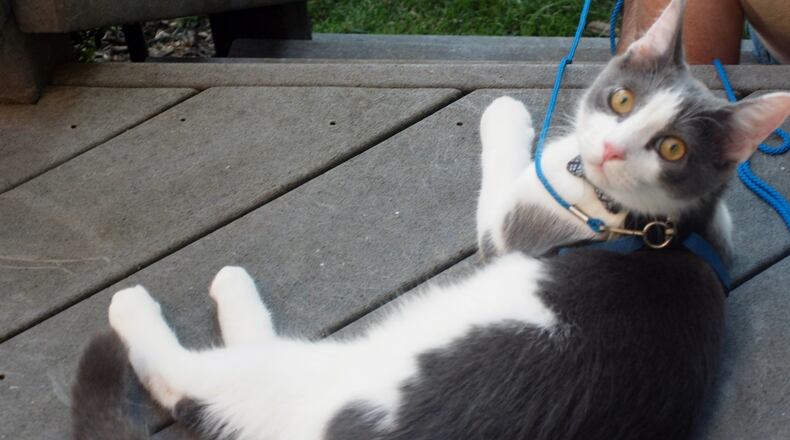Dr. Kathryn Primm, writing for iheartcats.com, says, “Some cats really do not seem to care about a clean box and some cats will not use a box that is even a little soiled.”
Most experts agree, however, that litter boxes should be cleaned at least every other day.
In my house, we all clean the litter box. If one of us walks into the master bedroom closet where it is located and Pip, our 11-month-old kitten, has used it, we immediately clean it.
There are four reasons we are laser focused on the litter box.
First, the smell. I’m sorry, but in my not-so-professional opinion, none of the brands kill the odor completely. The best way to take care of the stench is to remove the offending clumps.
The second reason is our 60-pound black Lab. Teddy has occasionally snacked on the offending clumps. Fortunately, this has been a rare occurrence because we are so focused on it.
Third, the mess. Pip is tidy but he still manages to fling litter outside the box. To keep it off the bottom of our shoes, we keep a small hand vacuum in the closet.
The final and probably most important reason is that Pip likes his box clean. How do I know? He’s stood by it and squawked and then promptly hopped in to “do his business” when the unacceptable clump was removed.
Cat litter wasn’t discovered through years of research. It was discovered through a “give it a try” approach. And yes, I researched “the history of kitty litter.”
For centuries, cats have lived with humans. But during this time, felines lived primarily outside, hunting their own food and “doing their business” where they wanted to.
According to Linda Lombardi for vetstreet.com, by the mid-1940s, a majority of cats lived indoors and owners could purchase an “E-Z Klean Kitty Toilet.” This was a paper-lined enameled pan and optional privacy screen.
Typically, owners filled the boxes with materials like dirt, sand, sawdust and ashes.
Then Edward Lowe accidentally discovered “kitty litter.” Lowe’s family’s business sold sand, sawdust and granulated clay.
One day, a woman named Kay Draper, tired of her cat tracking ashes from the litter box all over the house, asked Lowe for some sand. Since it was mid-winter, his sand piles were frozen. He told her sawdust would also get tracked through the house.
He gave her a bag of the granulated clay and told her to give it a try. Two weeks later, Draper returned asking for more. Soon, others were asking for it, too.
Changing its name to “Kitty Litter,” Lowe gave it away until people were willing to buy it. Eventually, his litter was sold in stores and became the “Tidy Cat” brand.
According to cathealth.com, in 1984, Thomas Nelson, a biochemist who raised Persian cats, made another accidental discovery.
While studying clay microscopically, Nelson discovered that some types, like bentonite, prevented urine from breaking down – eliminating the ammonia smell. When it dried rather than being put in a kiln, it clumped together. And with that finding, odor-reducing, clumping, cat litter was developed.
And that’s the stinky truth of the beginnings of “cat litter.”
Karin Spicer, a magazine writer, has been entertaining families for more than 20 years. She lives in Bellbrook with her family and two furry animals all who provide inspiration for her work. She can be reached at spicerkarin@gmail.com.
Eight biodegradable cat litters
1. Wood
2. Paper
3. Bamboo
4. Grass seed
5. Coconut
6. Walnut
7, Corn
8. Wheat
SOURCE: litterboxes.com
About the Author

